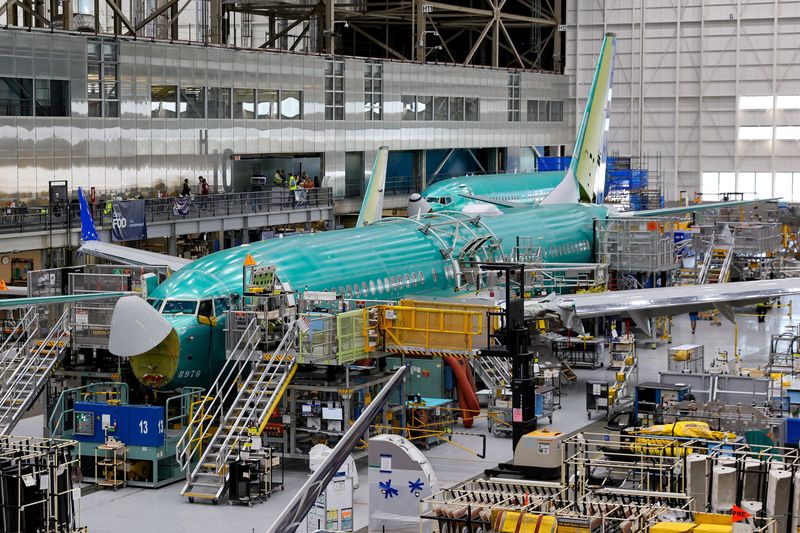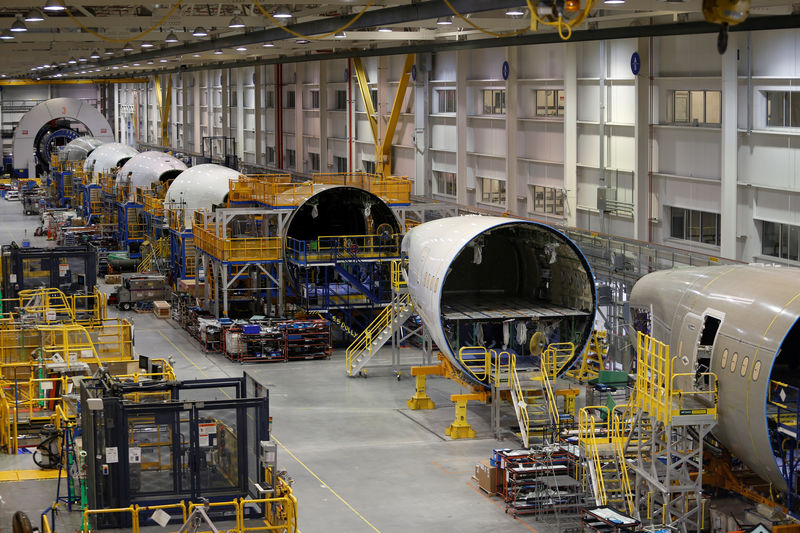By Tim Hepher and Padraic Halpin
WASHINGTON/DUBLIN (Reuters) – Boeing’s (NYSE:) first strike in 16 years could further exacerbate the global jet shortage, which has pushed up airfares and forced airlines to keep older planes flying longer, executives and analysts say from the sector.
The US planemaker’s West Coast workers went on strike at midnight on Friday after overwhelmingly rejecting a contract deal that halted production of Boeing’s workhorse 737 MAX.
It is Boeing’s first strike since 2008, and Boeing Chief Financial Officer Brian West warned that a prolonged strike could hurt production and “jeopardize our recovery.”
“Boeing is a systemically important company for global aviation,” Ross O’Connor, chief financial officer of Irish leasing company Avolon, told Reuters on Friday.
A strike “could have an impact on production levels, which could certainly exacerbate some of the supply shortages currently in the market,” he said after Avolon announced it had acquired a large portfolio of aircraft from Castlelake.
Airlines are struggling to expand capacity to meet rising demand as jet supply is limited by parts shortages, industry-wide recruitment problems and overloaded maintenance workshops.
Analysts have warned that the most promising part of the industry’s all-important business cycle could end before airlines have a chance to reap the full benefits of demand.
“It will be quite some time before we see that equilibrium. I’m starting to develop the hypothesis that it won’t be the (additional) supply that corrects this, but instead a softening of demand,” said Rob Morris, global head of consultancy at Cirium Ascend.
Some say high airfares — even if good for airlines in the short term — could accelerate that tipping point itself.
“My view is that average fares will increase; and if ticket prices increase, all other things being equal, you will have lower levels of traffic,” said aviation economist Adam Pilarski, senior vice president at AVITAS consultancy.
With Boeing ceasing production of its best-selling aircraft, European rival Airbus is also struggling to achieve its targets.
Airbus CEO Guillaume Faury expressed optimism at a U.S. Chamber of Commerce conference this week that the European planemaker would meet a recently lowered target of 770 deliveries this year, after a profit warning and an engine supply problem in the summer.
But after a short-lived spike in deliveries in July, industry sources wondered how comfortably the world’s largest planemaker would surpass last year’s 735.
The decreasing number of aircraft in storage and the record use of existing aircraft confirm the shortage in supply.
FLEET AGE IS RISING
For now, Boeing’s lower production levels compared to Airbus may limit the strike’s compounding effect. Still, analysts say airlines have little room to maneuver.
Now that leasing companies no longer have available capacity, airlines have to keep existing aircraft flying longer.
For most of the past fifteen years, the average fleet age has fallen as airlines and leasing companies took advantage of low interest rates to invest in new fuel-efficient aircraft.
According to data from Cirium, the average age of the widespread single-aisle jet fleet in 2010 was about 10.2 years.
After dropping to 9.1 years during the pandemic, when airlines grounded their fleets, the age started growing again. It now stands at 11.3 years “and still going up,” Morris said.
This is despite efforts to achieve net zero emissions by 2050, which are partly dependent on modernizing the aircraft in use.

“It must mean we’re burning more CO2 than we should because we’re using more old airplanes… so one of the things that can go wrong is sustainability,” Morris said.
The aviation sector says it is confident it will achieve its net zero emissions target by 2050.


